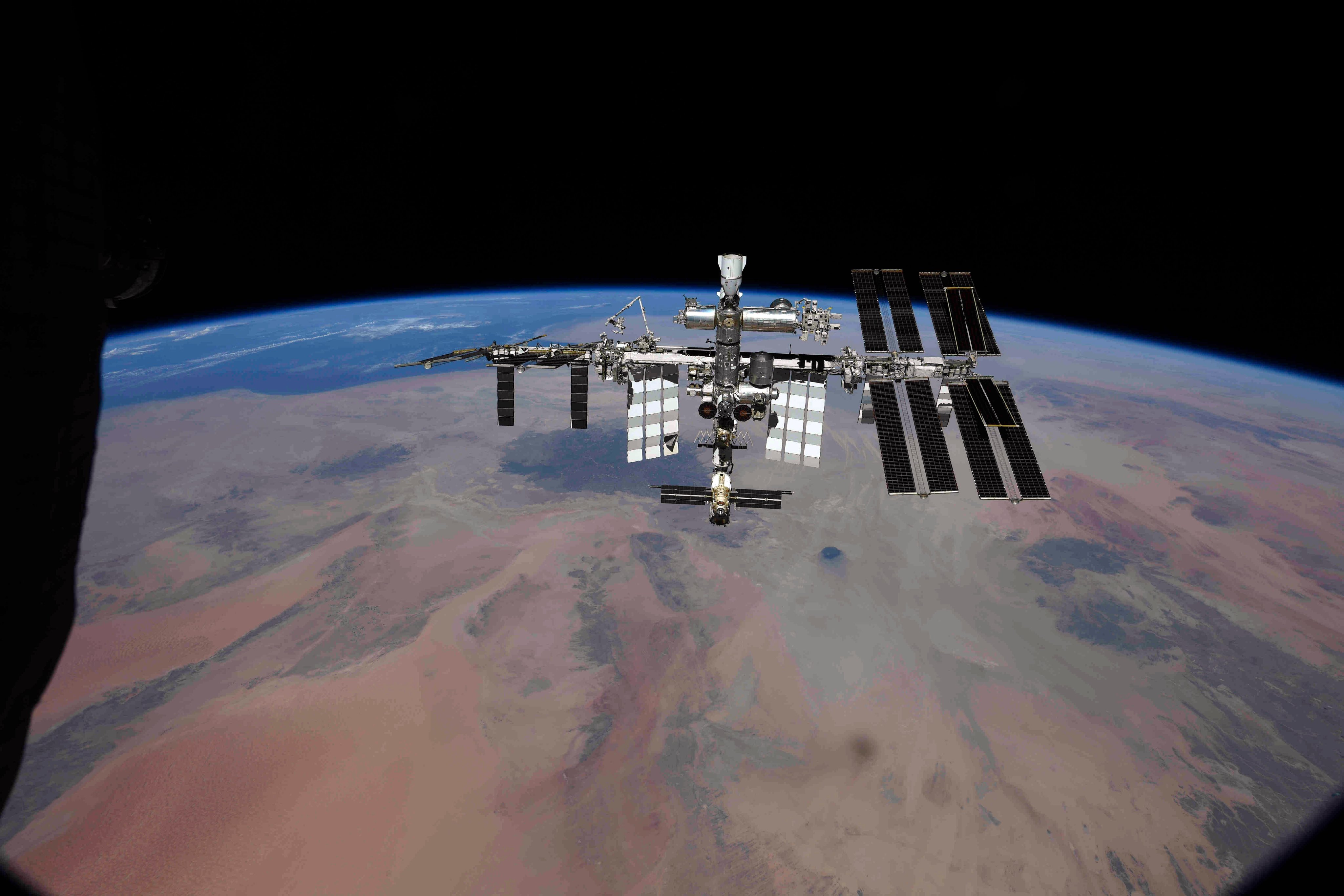Cosmonaut photos show International Space Station from rare perspective
If you've started taking the International Space Station for granted, these new photos could serve as a tonic.
The two images, shared on Twitter Sept. 29 by cosmonaut Oleg Novitsky, show the orbiting lab in all its complex, multimodular glory.
The photos were taken Sept. 28 from a Russian Soyuz capsule, which Novitsky, fellow cosmonaut Pyotr Dubrov and NASA astronaut Mark Vande Hei were relocating from the station's Earth-facing Rassvet module to the active docking port of the Nauka multipurpose laboratory module.
Live updates: Missions to the International Space Station
Related: Building the International Space Station (photos)

The trio made the move to make space for another Soyuz capsule, which is scheduled to launch toward the orbiting lab on Tuesday (Oct. 5) with director Klim Shipenko, actor Yulia Peresild and cosmonaut Anton Shkaplerov on board. Shipenko and Peresild will film part of a Russian movie called "Challenge" on the station, then return to Earth on Oct. 16 (Oct. 17 in Kazakhstan). (Shkaplerov will stay on the orbiting lab for the usual six-month stint.)
The station has seen other comings and goings recently, as the two new photos show. For example, the long-awaited, oft-delayed Nauka module — visible at the "bottom" of the station, pointing toward the viewer in each image — arrived at the orbiting lab in late July, causing some unwelcome drama in the process.
And SpaceX's Crew Dragon capsule "Endeavour," which brought four astronauts to the station in April on the company's Crew-2 mission for NASA, is clearly visible in both images, sticking "up" from the Harmony module's zenith port. And in one of the pictures, part of a robotic SpaceX cargo Dragon can be seen behind Endeavour, docked at a different Harmony port.
That cargo Dragon is no longer part of the International Space Station complex; it came back down to Earth on Friday (Oct. 1), packed with about 4,600 lbs. (2,100 kilograms) of scientific experiments and other gear. Endeavour will return relatively soon as well; it's scheduled to bring NASA astronauts Shane Kimbrough and Megan McArthur, Japan's Akihiko Hoshide and the European Space Agency's Thomas Pesquet home next month.
Breaking space news, the latest updates on rocket launches, skywatching events and more!
That quartet is part of an impressive carousel of off-Earth living. The space station has hosted rotating crews of astronauts continuously since November 2000.
Mike Wall is the author of "Out There" (Grand Central Publishing, 2018; illustrated by Karl Tate), a book about the search for alien life. Follow him on Twitter @michaeldwall. Follow us on Twitter @Spacedotcom or Facebook.

Michael Wall is a Senior Space Writer with Space.com and joined the team in 2010. He primarily covers exoplanets, spaceflight and military space, but has been known to dabble in the space art beat. His book about the search for alien life, "Out There," was published on Nov. 13, 2018. Before becoming a science writer, Michael worked as a herpetologist and wildlife biologist. He has a Ph.D. in evolutionary biology from the University of Sydney, Australia, a bachelor's degree from the University of Arizona, and a graduate certificate in science writing from the University of California, Santa Cruz. To find out what his latest project is, you can follow Michael on Twitter.

